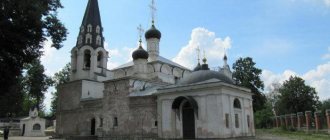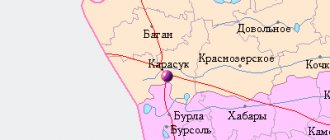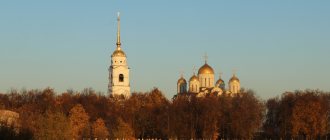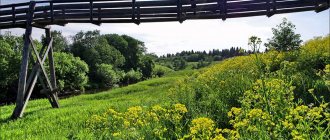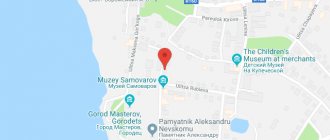Story
Monument to Boyan in Trubchevsk.
In early sources the city is called Trubech, Trubezh, Trubetskoy, Trubchesky or Trubezhskoy. Initially, the settlement was located 10 km downstream of the Desna, near the modern village of Kvetun. The thickness of the cultural layer at the settlement was 60–80 cm. The lower layers belong to the Yukhnovskaya archaeological culture of the Early Iron Age. Dwellings and metallurgical forges have been studied in the Old Russian layers. Among the finds of the Old Russian period are brooches, glass bracelets and beads, coins (including Byzantine Constantine VII). Judging by the finds of thin plinths and fragments of a voice box, at the settlement in the 11th - 12th centuries. there was a stone temple.
Near the settlement there is a burial mound, which was completely excavated in 1950 - 1970 by V.A. Padin (about 200 mounds were studied). The lower date of both the settlement and the burial ground is the 10th century. The burial ground is divided into 10 mound groups, each of which was the cemetery of one or more close families. Among the finds are jewelry (temple rings, torcs, pendants), weapons (axes).
From the 12th century Trubchevsk is located on a modern site, the center of an appanage principality. In 1240 it was captured by the Mongol-Tatars. In 1356, it was taken by the Grand Duke of Lithuania Olgerd and given to his son Dmitry, the founder of the dynasty of the Trubetskoy princes. Captured by the Grand Duchy of Moscow during the war of 1500-1503, in the Time of Troubles (1609) captured by the Poles (legally transferred to the Polish-Lithuanian Commonwealth according to the Deulin Truce of 1618. Returned to the Russian Kingdom in 1645.
Trubchevsk in the XVIII-XIX centuries
After the conclusion of the Truce of Andrusovo between Russia and Poland in 1667, Trubchevsk lost its significance as a border fortress. However, the city is still surrounded by an earthen rampart up to “three fathoms high, at the base of two fathoms,” ditches “depth along the axis of fathoms,” and high wooden walls. Earthen fortifications around the territory of the modern city park (the center of Trubchevsk in the 17th-18th centuries) also appear in the materials of the general survey of the late 18th century. This was due to the defensive measures implemented by Peter I during the Northern War. Located near the Smolensk-Chernigov line, Trubchevsk was an important military point, which, by order of Peter, needed to be “...although it was not enough to reinforce it.”
Agriculture (it formed the basis of the economy, and Trubchevsk, in connection with this, is gradually becoming the center of the agricultural region) contributed to the development of trade and the emergence of enterprises for processing agricultural raw materials. An increase in the sown area and an increase in grain yields stimulated the development of milling and distillation.
TRUBCHEVSK
TRUBCHEVSK, a city in Russia, in the Bryansk region, the center of the Trubchevsky district. Us. 13.6 thousand people (2019). Located on the river. Desna, 53 km from the railway. Art. Suzemka.
Story
The city arose in the 2nd half. 12th century based on a settlement from the 9th–11th centuries. In 1164–1500 the center of the Trubchevsky princedom. In the 2nd half. 12th century expanded, adjacent to Detinets (40×40 m) was a triangular round town (800×500 m), where a stone temple was erected. It was first mentioned in the Tale of Bygone Years in 1185 as Trubechsk. Among the finds is a treasure trove of ancient Russian jewelry. time (late 12th – early 13th centuries; including silver with niello, cross made using cloisonné enamel technique).
Probably from the 1370s. within the Grand Duchy of Lithuania. In 1500, during the Rus.-Litov. wars of 1500–1503, the Trubchev princes (see Trubetskoys) went into the service of the great. book Moscow Ivan III Vasilyevich with his possessions, T. became part of Rus. state (secured by the Moscow Truce of 1503). During the Livonian War of 1558–83, he was ravaged by a detachment of the prince. M. A. Vishnevetsky in 1581. In the 1580s. new fortifications were erected. During the Time of Troubles in 1609, False Dmitry II granted it to the Sandomierz governor J. Mnishek. According to the Deulin truce of 1618, it went to the Polish-Lithuanian Commonwealth. On Dec. 1632 occupied by Russian. troops during the Russian-Polish wars of 1632–34, according to the Treaty of Polyanovsky in 1634 it remained part of the Polish-Lithuanian Commonwealth. During border surveying, additional Protocol dated October 18 (28), 1644, the city was transferred to Rus. state-woo In 1659 new wood-earth fortifications were built. From 1660 belonged to the prince. A. N. Trubetskoy. From the end 17 – beginning 18th centuries Industry developed in T. and the district (iron-making, glass factories, in the 2nd half of the 18th century - distilleries, etc.). District city of the Kyiv province (1708–19), Sevsk province of the Kyiv (1719–27) and Belgorod (1727–78) provinces, Oryol province (1778–1920; until 1796 - Oryol governorship). During the Patriotic War of 1812 it was a base for the procurement of provisions for the Russians. army.
Sov. power was established on January 2(15), 1918. County town (1920–24) and volost center of Pochepsky district. (1924–29) Bryansk province. Regional center of the Bryansk region. Western region (1929–30), Western region. (1930–37), Oryol region (1937–44). In Vel. Otech. the war to the west of T. 29.8–5.9.1941 one of the largest oncoming tank battles of the initial stage of the war took place (up to 600 tanks and armored vehicles on both sides). Germany is occupied. troops on October 9, 1941, was heavily destroyed. Liberated by Soviet troops on September 18, 1943 during the Bryansk offensive operation. Regional center of the Bryansk region (1944–63, since 1964).
Architecture. Cultural centers
Trubchevsk. View of the city. Photo by I. P. Shpilenok
It developed according to the regular plans of 1780 and 1808. On Cathedral Hill there is the Cathedral of the Life-Giving Trinity in the late Baroque style (1784–92, on the foundations of the cathedral of the last third of the 12th century and the basement of the cathedral of 1503–20, where the vaulted white stone tomb of the Trubetskoy princes of the 16th–17th centuries has been preserved .) with classicism. bell tower (1824); ruins c. Transfiguration of the Savior (1690–93, on the foundations of the temple 1640–49; bell tower, 1760; refectory, mid-19th century) and c. Intercession of the Blessed Virgin Mary (1787–96, reconstruction, 2nd half of the 19th century); Kamenitsa (18th century). There are many in the city center. civil monuments architecture of the 19th century, including the building of an orphanage (1878). To the mountains cemeteries - the Church of the Presentation of the Lord (1811) and the Prophet Elijah in the Russian style (1846–48, rebuilt in 1890–96). Monument to the 1000th anniversary of T. with the figure of Boyan (1975; sculptor A. I. Kobylinets). Museum and Planetarium (1919, current name and status since 2005), Lit. museum (2015). A jeweler's treasure from the 2nd–3rd quarter was found in T. 7th century - one of the richest circles of the Martynovsky treasure.
Farm
Production of products for the needs of the defense industry (Monolit plant, aircraft gun installations and containers, automation units, pre-flight diagnostic systems for on-board equipment); food industry enterprises (Desnyansky food processing plant, Trubchevskkhleb).
Neighborhood
On the outskirts of T., in the village. Gorodtsy, – House of Peasant Life (opened in 2008). South of T., near the village. Kvetun, - the remains of one of the centers of the northerners (9th–10th centuries) and other Russian. multi-ethnic pre-urban center (late 10th–12th centuries; female burials of 5 Eastern Slavic tribes, Balts and Finno-Ugrians were recorded), which in the 12th–13th centuries probably turned into a country princely residence. An ancient settlement, a settlement, and numerous settlements were studied. mounds (including partial cremation in a semi-ground “chamber” with belt overlays, turn of the 10th–11th centuries); on the site there are plinths from the church or princely mansions; in the village there are traces of iron production and lime production; etc. On the territory of the settlement there are the remains of the Spassky Cholsky men's monastery. (founded in the 16th century, closed in 1923), including Vvedenskaya Church. (1733) with a refectory (1731–41), a bell tower and part of the fence (late 18th – early 19th centuries). In the vicinity of T. there is a Baroque church. The Descent of the Holy Spirit in the village. Selets (1781), wooden. c. Dormition of the Blessed Virgin Mary in the village. Radutino (1870).
Notable natives
- Leonid Vasilyevich Sobolev (1876-1919) is a Russian pathologist who in 1900 proposed a method for isolating an “antidiabetic substance” from the pancreas, which was used in 1922. used by insulin discoverers Banting and Best
- Alexander Cheglok (1871-1942) - Russian traveler, theosophist, writer, inventor, naturalist.
- Alexander Ivanovich Galich (1783-1848) - teacher of A. S. Pushkin, teacher at the Tsarskoye Selo Lyceum, professor.
- Voden, Alexey Mikhailovich, writer, philosopher and translator
- Ivan Efimovich Petrov (1896-1958) - Hero of the Soviet Union, army general.
Excursion to the park of the city of Trubchevsk (part one)
Zoya Vitalievna Razumnaya
Excursion to the park of the city of Trubchevsk (part one)
A walk into the past or the park of my youth (part one)
Hello, dear friends, colleagues and guests of my page! Today I want to introduce you to the park of my youth, which is located in the city of Trubchevsk, Bryansk region. In this wonderful city I was lucky enough to spend the best years of my life, the years of my youth. In the last century, from 1981 to 1985, I was a student at the Trubchevsky Pedagogical School, which I graduated with honors.
Trubchevsk is one of the ancient cities of Russia. It is included in the 115 ancient cities of the Russian Federation that have the largest number of archaeological, architectural and memorial monuments. In 1975, Trubchevsk celebrated its 1000th anniversary.
The name of the city is associated with the military campaigns of our ancestors. The trumpet called for battle and warned of danger. Therefore, the root of the word pipe – “pipe” – was used as the basis for the name of the city.
Trubchevsk has been mentioned in writings since 1164, but archaeological research materials date the formation of Trubchevsk as a city at the end of the 3rd quarter of the tenth century.
In the 10th-12th centuries it was part of the Chernigov principality. From the second half of the 14th century it was under the rule of the Principality of Lithuania. And in 1503 it was annexed to the Moscow state.
In 1941-1943, the Trubchevsky district was an active zone of the partisan movement. Trubchevsky district gave the country 10 Heroes of the Soviet Union. A native of the city is a prominent Soviet military commander, Army General Ivan Efimovich Petrov.
One of the city's attractions is the park of culture and recreation - a monument of history and nature - a favorite place for Trumpet residents and guests of the city. And for us students, the city park was a favorite place to spend time.
Quite recently I found myself in Trubchevsk and, of course, I couldn’t help but visit my favorite park. I suggest you take a walk through the park of one of the ancient cities of Russia.
Central alley of the park
Adjacent to the park is the Church of the Transfiguration, which is called the Catholic Church. According to local legend, there used to be a date for the construction of the church laid out in brick - 1640. If this is true, then the church was built by the Poles, who dreamed of establishing the captured city for themselves.
A monument was erected in the city park in honor of the 1000th anniversary of Trubchevsk.
Its central figure is the ancient Russian singer-storyteller Boyan.
The monument to the 1000th anniversary of Trubchevsk, installed in the city park in 1975, became a symbol of the city and the entire Trubchevsky region, behind which the name “land of Boyana” was established - ancient, epic places of Slavic glory and the origins of culture.
The monument closes the central alley. The sculpture (height 3.6 m) and bas-reliefs are made of bronze, the pedestal and decorative wall are made of concrete. Solved in a symbolic form, in the image of Boyan, an ancient Russian singer-storyteller mentioned in “The Tale of Igor’s Campaign.”
Boyan is depicted as a majestic old man with a harp on his knees. The sculpture is installed on a low pedestal of a simple tetrahedral shape. Adjacent to it on both sides is a low, extended wall with bronze bas-reliefs - fourteen scenes on the themes of the main stages of the city’s history, from its origins (975) to the present.
We live in the world. Everything is not new for a long time,
But sometimes the edges open up,
Where is the light from the poetic word
Suddenly the picture of existence illuminates...
The city is famous for its archaeological and architectural monuments, the main of which is the Trinity Cathedral, rising on Cathedral Hill above the Desna. The history of this temple is so curious that it is called a stone book of the history of the city, the chapters of which are “painted” at different times and with different materials.
The inscriptions on the tombstones of the family tomb of the Trubetskoy princes indicate that the cathedral was built no later than the 15th century. Meanwhile, archaeological excavations in 1971 revealed near the walls of the cathedral altar the remains of a stone temple built at the end of the 12th century. At the beginning of the 16th century. The Trubetskoy princes built a small church, which later became their family tomb.
The current cathedral was built over the old one at the end of the 18th century. The current Trinity Cathedral was built over eight centuries and in fact is not one, but several churches, practically built on top of each other.
Thank you to everyone who visited my post.
To be continued.
Trubchevsk
(Bryansk region)
OKATO code:
15256501
Founded:
975
City from:
975 City of district subordination (Trubchevsky district, Bryansk region)
Center:
Trubchevsky district
Telephone code (reference phone)
| 48352***** | 24-00-8 |
Deviation from Moscow time, hours:
0
Geographic latitude:
52°35′
Geographic longitude:
33°46′
Altitude above sea level, meters:
170 Sunrise and sunset times of the Sun and Moon in the city of Trubchevsk
Trubchevsk on the map of Russia
You can find Trubchevsk on the map and get directions using your navigator using the coordinates (52.909192, 33.422197). In the north are the cities of Pochep and Mglin, in the northeast - Bryansk, in the east - the village of Navlya, in the west - Starodub and the village of Pogar, in the northwest - Unecha, in the east - the village of Lokot, in the southeast - Sevsk, on in the south - the border with Ukraine.



